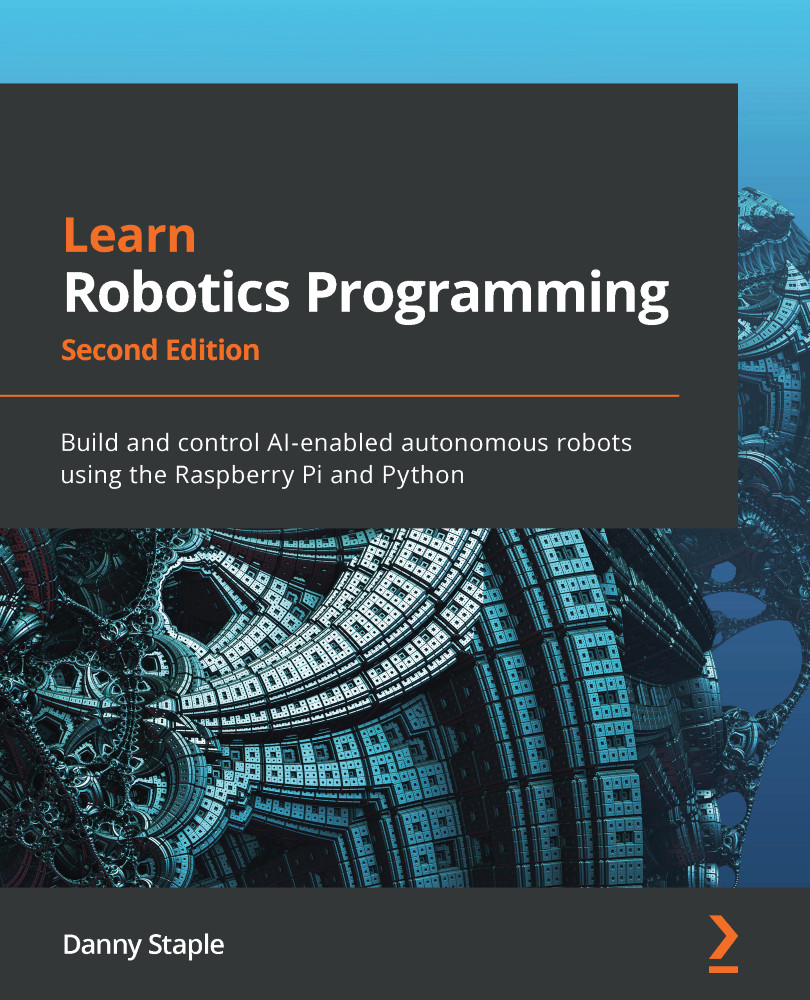Comparing light strip technologies
There are many competing technologies for lights and light strips. For light types, incandescent lights, such as old light bulbs, tend to use a lot of power and take up too much space to be useful in robots. Fluorescent lights, such as kitchen strips or curly compact types, need complex power systems that also take up too much space. Electroluminescent wire, also known as EL wire, is often used to decorate objects by outlining them; it looks interesting but is tricky to control. Light Emitting Diode (LED) technology is low power and tends to be small and easy to control, which makes it best suited for robots such as ours. LEDs are also cheap.
The most useful kind, in our case, which we will use in this chapter, are addressable RGB LEDs. Addressable means that each individual LED in the strip can be set to different colors and brightness, allowing a sequence of colors along the strip. To keep it simple, we will use a type with a built-in controller...






































































